Feasibility Study of Integrated Precision Abrasive Machining of Shaped Surfaces
Abstract
:Featured Application
Abstract
1. Introduction
2. Materials and Methods
2.1. Design of the Dual-Tool Grinding Head
2.2. Manufacture of the Dual-Tool Grinding Head
- the process of turning the inner body of the head on a HAAS ST10 turning center;
- the process of milling the outer body of the head on a HAAS VF2 milling center;
- the process of milling the inner body of the head on a HAAS VF2 milling center;
- the process of milling the M19×1 mounting adapter on a HAAS VF2 milling center;
- the process of milling the pneumatic cylinder holder on the HAAS VF2 milling center;
- the process of chiseling the outer body of the head on a conventional chiseling machine made at the Tarnobrzeg Machine Tool Factory, model PABP-63.
2.3. Methodology of Experimental Research of the Grinding Process
3. Results and Discussion
- Sa—arithmetic mean deviation of the surface,
- St—total height of the surface,
- Sds—density of summits of the surface,
- Sq—root-mean-square deviation of the surface,
- Str—texture aspect ratio of the surface,
- Spk—reduced peak height.
- The obtained results are summarized in Figure 15.
4. Conclusions
- The conducted tests of the grinding process showed a reduction in the values of the roughness parameters Sa (5.30, 1.12, 0.63 μm), St (31.8, 14.4, 6.72 μm), Sq (6.39, 1.46, 0.81 μm) and Spk (6.16, 0.77, 0. 33 μm), and an increase in the value of the parameter Sds (393, 563, 1203 pks/mm2) on the surface after machining in two stages, first for rough grinding and then for finishing; this was relative to the surface after the shaped milling process.
- The value of the Str parameter changed unevenly during the tests. It first decreased during coarse grinding (from a value of 0.03 to 0.0187), and then increased during finishing (from a value of 0.0187 to 0.0367). This is due to the fact that first, a grinding wheel was used that made linear contact with the workpiece during grinding, and then a wheel was used that ground the workpiece with its entire circumference.
- Microscopic analysis showed that the ceramic grinding wheel exhibited numerous inclusions and seizures with the workpiece material. Most likely, this is due to the insufficient openness of the grinding wheel structure and the adhesion of grinding products (mainly chips of workpiece material) to its active surface.
- Microscopic analysis of the active surface of the prone grinding wheel shows that the grains are only moderately worn. The magnifications show some chipped grains, but they are so few that the wheel is suitable for grinding subsequent samples while ensuring the full repeatability of the geometric structure of the machined surface.
Author Contributions
Funding
Acknowledgments
Conflicts of Interest
References
- Kshirsagar, N.; Tayade, R.M. A review of sequential micro-machining: State of art approach. In Materials Today: Proceedings; Elsevier: Amsterdam, The Netherlands, 2023; Volume 72, pp. 1394–1400. [Google Scholar]
- Bennett, J.; Garcia, D.; Kendrick, M.; Hartman, T.; Hyatt, G.; Ehmann, K.; You, F.; Cao, J. Repairing automotive dies with directed energy Deposition: Industrial application and life cycle analysis. J. Manuf. Sci. Eng. 2019, 141, 021019. [Google Scholar] [CrossRef]
- Krajnik, P.; Hashimoto, F.; Karpuschewski, B.; Silva, E.J.D.; Axinte, D. Grinding and fine finishing of future automotive powertrain components. CIRP Ann. 2021, 70, 589–610. [Google Scholar] [CrossRef]
- Azim, S.; Noor, S.; Khalid, Q.S.; Khan, A.M.; Pimenov, D.Y.; Ahmad, I.; Babar, A.R.; Pruncu, C.I. Sustainable manufacturing and parametric analysis of mild steel grade 60 by deploying CNC milling machine and Taguchi method. Metals 2020, 10, 1303. [Google Scholar]
- Nadolny, K.; Kapłonek, W. Analysis of flatness deviations for austenitic stainless steel workpieces after cient surface ma-chining. Meas. Sci. Rev. 2014, 14, 204–212. [Google Scholar]
- Wang, N.; Zhang, G.; Ren, L.; Yang, Z. Analysis of abrasive grain size effect of abrasive belt on material removal performance of GCr15 bearing steel. Tribol. Int. 2022, 171, 107536. [Google Scholar] [CrossRef]
- Habrat, W.F. Effect of Bond Type and Process Parameters on Grinding Force Components in Grinding of Cemented Carbide. Procedia Eng. 2016, 149, 122–129. [Google Scholar] [CrossRef] [Green Version]
- Guo, B.; Zhao, Q.; Fang, X. Precision grinding of optical glass with laser micro-structured coarse-grained diamond wheels. J. Mater. Process. Technol. 2014, 214, 1045–1051. [Google Scholar] [CrossRef]
- Wang, R.X.; Zhou, K.; Yang, J.Y.; Ding, H.H.; Wang, W.J.; Guo, J.; Liu, Q.Y. Effects of abrasive material and hardness of grinding wheel on rail grinding behaviors. Wear 2020, 454, 203332. [Google Scholar] [CrossRef]
- Yang, C.; Jiang, X.; Zhang, W.; Wang, X. Enhancing stress corrosion cracking resistance of machined surface via surface mechanical grinding treatment for AISI 316 L stainless steel. Mater. Charact. 2022, 194, 112493. [Google Scholar] [CrossRef]
- Chen, M.; Dai, H. Molecular dynamics study on grinding mechanism of polycrystalline silicon carbide. Diam. Relat. Mater. 2022, 130, 109541. [Google Scholar] [CrossRef]
- Przybylski, W. Integrated production technology of cylindrical surfaces by turning and burnishing. Adv. Manuf. Sci. Technol. 2016, 40, 29–42. [Google Scholar]
- Li, J.; Zou, L.; Luo, G.; Wang, W.; Lv, C. Enhancement and evaluation in path accuracy of industrial robot for complex surface grinding. Robot. Comput.-Integr. Manuf. 2023, 81, 102521. [Google Scholar] [CrossRef]
- Poppeova, V.; Uricek, J.; Bulej, V. Trends in the area of multitasking machine tools. In DAAAM International Scientific Book; DAAAM International: Vienna, Austria, 2011; Chapter 19; pp. 227–242. ISBN 978-3-901509-84-1. ISSN 1726-9687. [Google Scholar] [CrossRef]
- Nagae, A.; Muraki, T.; Yamamoto, H. History and Current Situation Situation of Multi-Tasking Machine Tools; Yamazaki Mazak Corporation: Takeda, Japan, 2012. [Google Scholar]
- Klocke, F.; Roderburg, A.; Zeppenfeld, C. Design methodology for hybrid production processes. Procedia Eng. 2011, 9, 417–430. [Google Scholar] [CrossRef] [Green Version]
- Lauwers, B.; Klocke, F.; Klink, A.; Tekkaya, A.E.; Neugebauer, R.; Mcintosh, D. Hybrid processes in manufacturing. CIRP Ann. Manuf. Technol. 2014, 63, 561–583. [Google Scholar] [CrossRef]
- Ding, S.; Zhang, H.; Guo, E.; Wu, W.; Zhang, Y.; Song, A. Integrated roughing, finishing and chamfering turning process of toroidal worm manufacture on a general CNC lathe. J. Manuf. Process. 2021, 70, 341–349. [Google Scholar] [CrossRef]
- Cai, Y.; Starly, B.; Cohen, P.; Lee, Y.S. Sensor data and information fusion to construct digital-twins virtual machine tools for cyber-physical manufacturing. Procedia Manuf. 2017, 10, 1031–1042. [Google Scholar] [CrossRef]
- Turning and milling machining center CTX gamma 2000 TC. Available online: https://pl.dmgmori.com/produkty/obrabiarki/toczenie/obrobka-tokarsko-frezarska/ctx-tc/ctx-gamma-2000-tc (accessed on 4 December 2022).
- Seidel, A.; Finaske, T.; Straubel, A.; Wendrock, H.; Maiwald, T.; Riede, M.; Lopez, E.; Brueckner, F.; Leyens, C. Additive manufacturing of powdery Ni-based superalloys Mar-M-247 and CM 247 LC in hybrid laser metal deposition. Metall. Mater. Trans. A Phys. Metall. Mater. Sci. 2018, 49, 3812–3830. [Google Scholar] [CrossRef]
- Kledwig, C.; Perfahl, H.; Reisacher, M.; Brückner, F.; Bliedtner, J.; Leyens, C. Analysis of melt pool characteristics and process parameters using a coaxial monitoring system during directed energy deposition in additive manufacturing. Materials 2019, 12, 308. [Google Scholar] [CrossRef] [Green Version]
- Integrated Toolholders for CNC Lathe with a Driven Y Axis. Available online: https://www.mtmarchetti.com/ (accessed on 4 December 2022).
- Yang, Y.; Wan, M.; Zhang, W.H.; Li, Y. Chip thickness analysis in peripheral milling of curved surfaces with variable curvature considering cutter runout. Mater. Sci. Forum 2012, 697, 75–79. [Google Scholar] [CrossRef]
- Rodríguez, A.; González, M.; Pereira, O.; López de Lacalle, L.N.; Esparta, M. Edge finishing of large turbine casings using defined multi-edge and abrasive tools in automated cells. Int. J. Adv. Manuf. Technol. 2023, 124, 3149–3159. [Google Scholar] [CrossRef]
- González, H.; Calleja, A.; Pereira, O.; Ortega, N.; López de Lacalle, L.N.; Barton, M. Super Abrasive Machining of Integral Rotary Components Using Grinding Flank Tools. Metals 2018, 8, 24. [Google Scholar] [CrossRef]
- González, H.; Pereira, O.; Fernández-Valdivielso, A.; López de Lacalle, L.N.; Calleja, A.; Comparison of Flank Super Abrasive Machining, vs. Flank Milling on Inconel® 718 Surfaces. Materials 2018, 11, 1638. [Google Scholar] [CrossRef] [Green Version]
- Khanna, N.; Rodríguez, A.; Shah, P.; Pereira, O.; Rubio-Mateos, A.; López de Lacalle, L.N.; Ostra, T. Comparison of dry and liquid carbon dioxide cutting conditions based on machining performance and life cycle assessment for end milling GFRP. Int. J. Adv. Manuf. Technol. 2022, 122, 821–833. [Google Scholar] [CrossRef]
- Pereira, O.; Rodríguez, A.; Calleja-Ochoa, A.; Celaya, A.; López de Lacalle, L.N.; Fernández-Valdivielso, A.; González, H. Simulation of Cryo-cooling to Improve Super Alloys Cutting Tools. Int. J. Precis. Eng. Manuf. Green Technol. 2022, 9, 73–82. [Google Scholar] [CrossRef]
- Mikolajczyk, T.; Pimenov, D.Y.; Pruncu, C.I.; Patra, K.; Latos, H.; Krolczyk, G.; Mia, M.; Klodowski, A.; Gupta, M.K. Obtaining various shapes of machined surface using a tool with a multi-insert cutting edge. Appl. Sci. 2019, 9, 880. [Google Scholar] [CrossRef] [Green Version]
- Sinlah, A.; Handayani, D.; Voigt, R.C.; Hayrynen, K.; M’Saoubi, R.; Saldana, C. Effects of microstructure and strength on wear performance in rough milling of austempered ductile iron. Int. J. Cast Met. Res. 2016, 29, 62–67. [Google Scholar] [CrossRef] [Green Version]
- Plichta, J.; Nadolny, K. Dual-Tool Grinding Head. PL 230988. 2018. [Google Scholar]
- Product Catalogue, 3M Abrasive Technology, Work Smarter, Finish Faster. 2021. Available online: https://multimedia.3m.com (accessed on 4 December 2022).

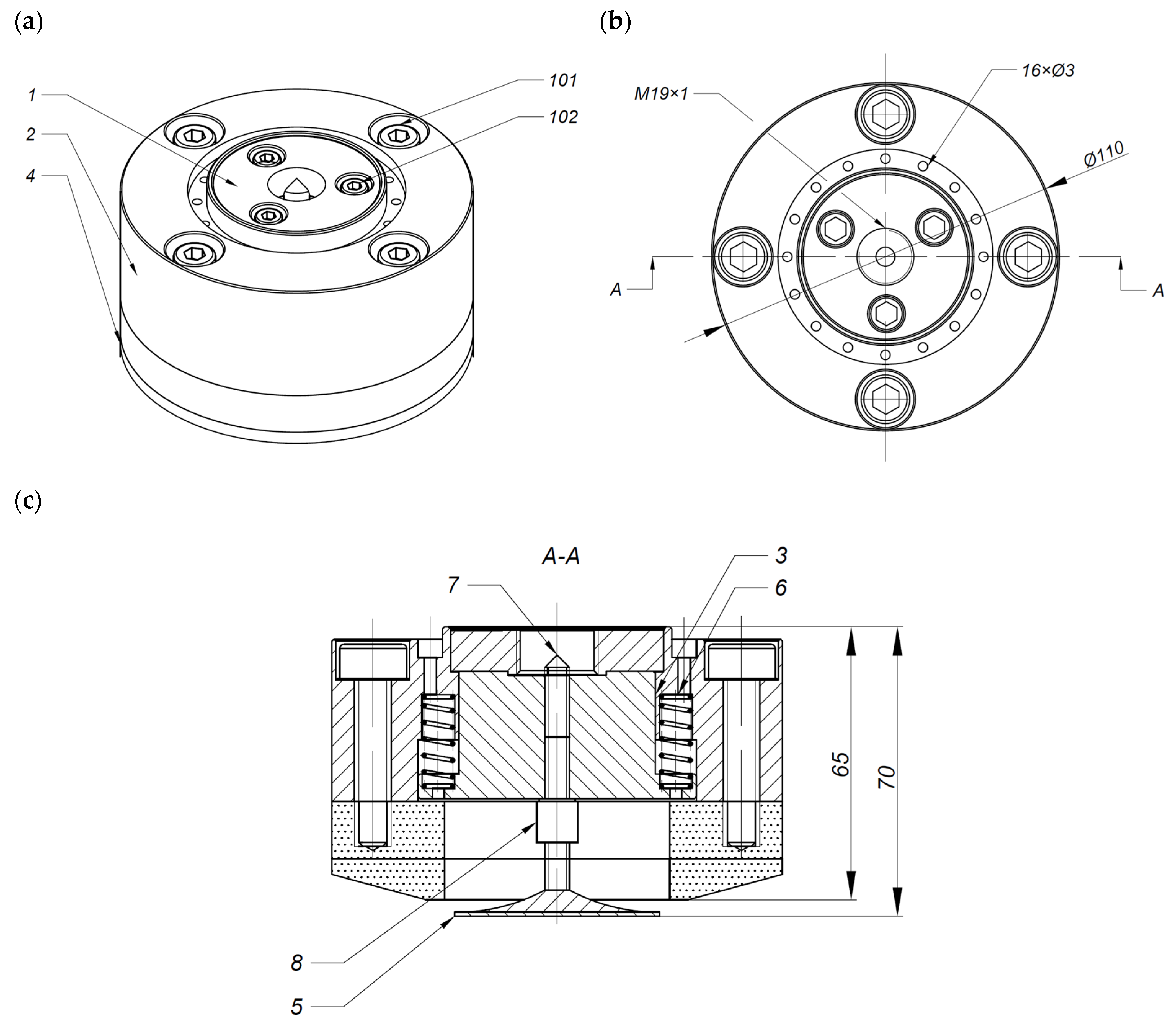
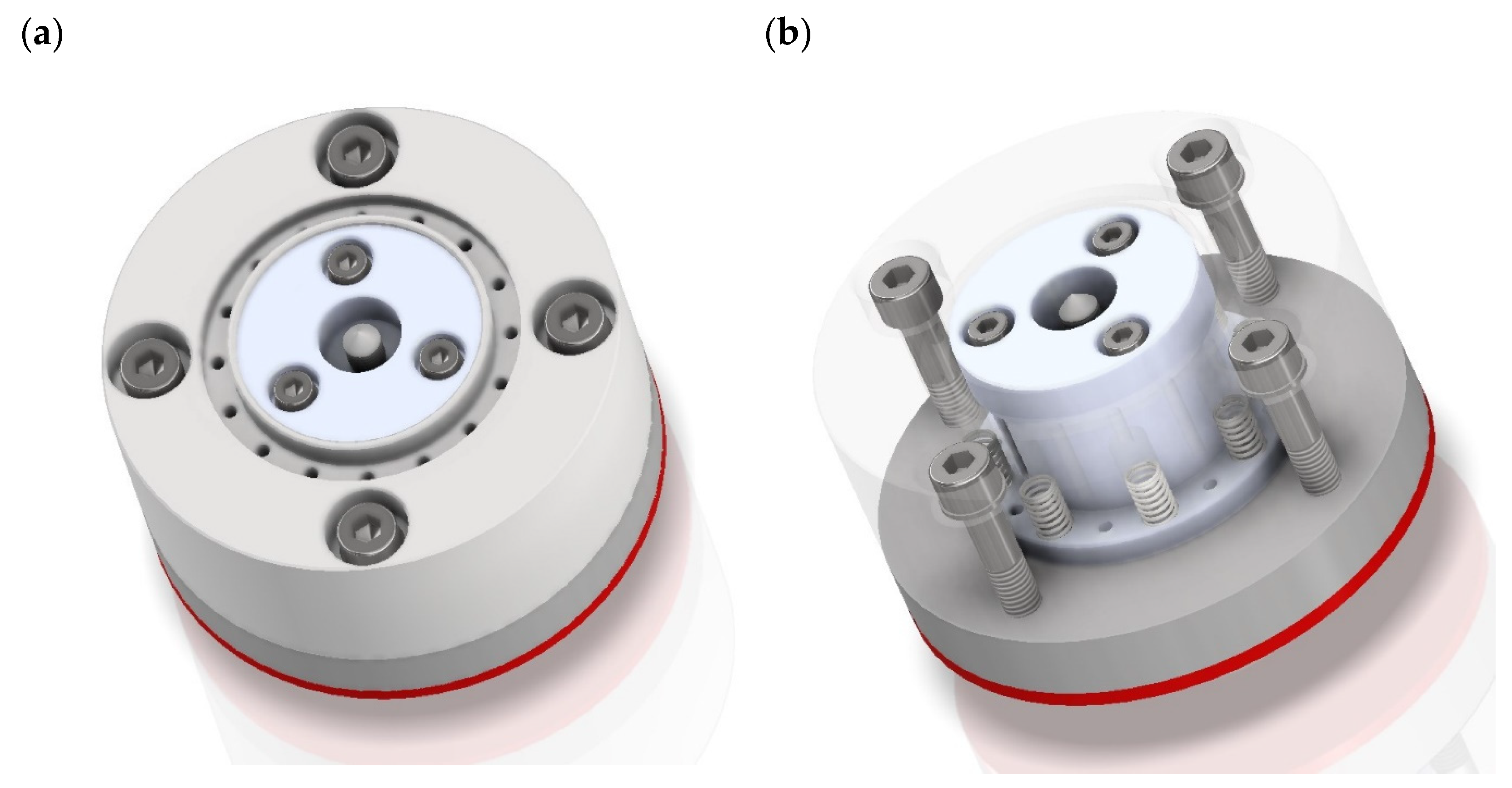
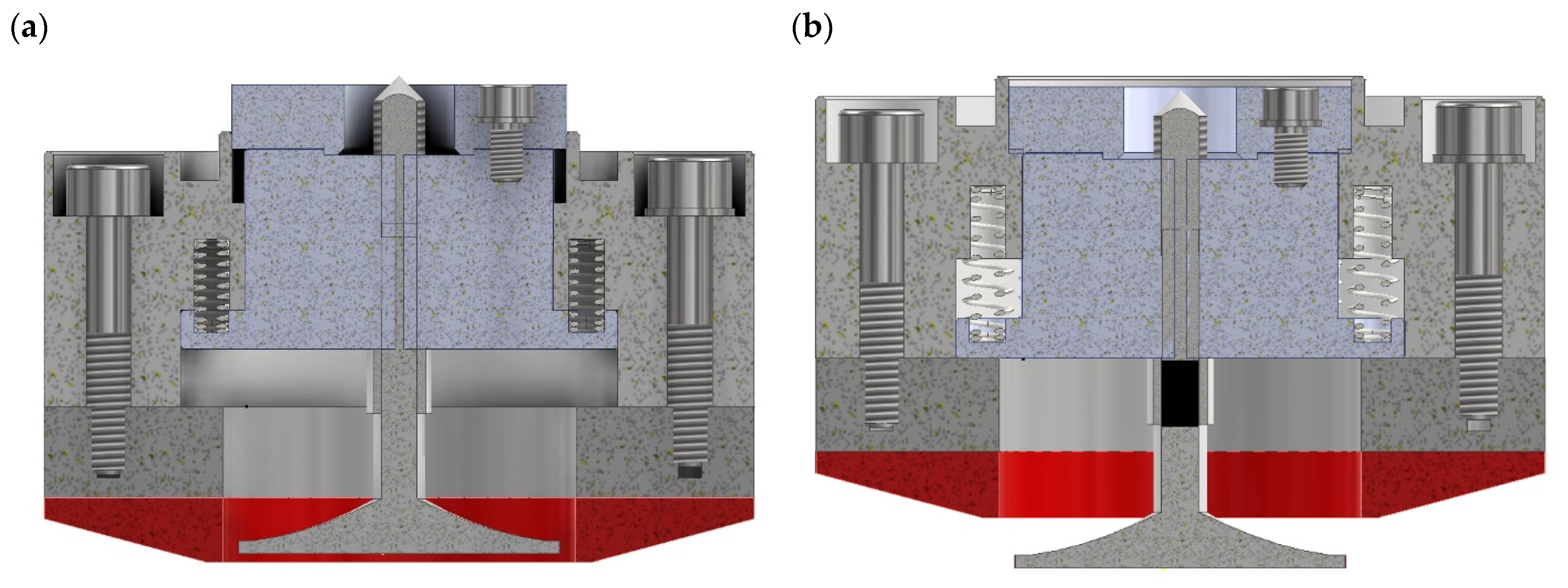
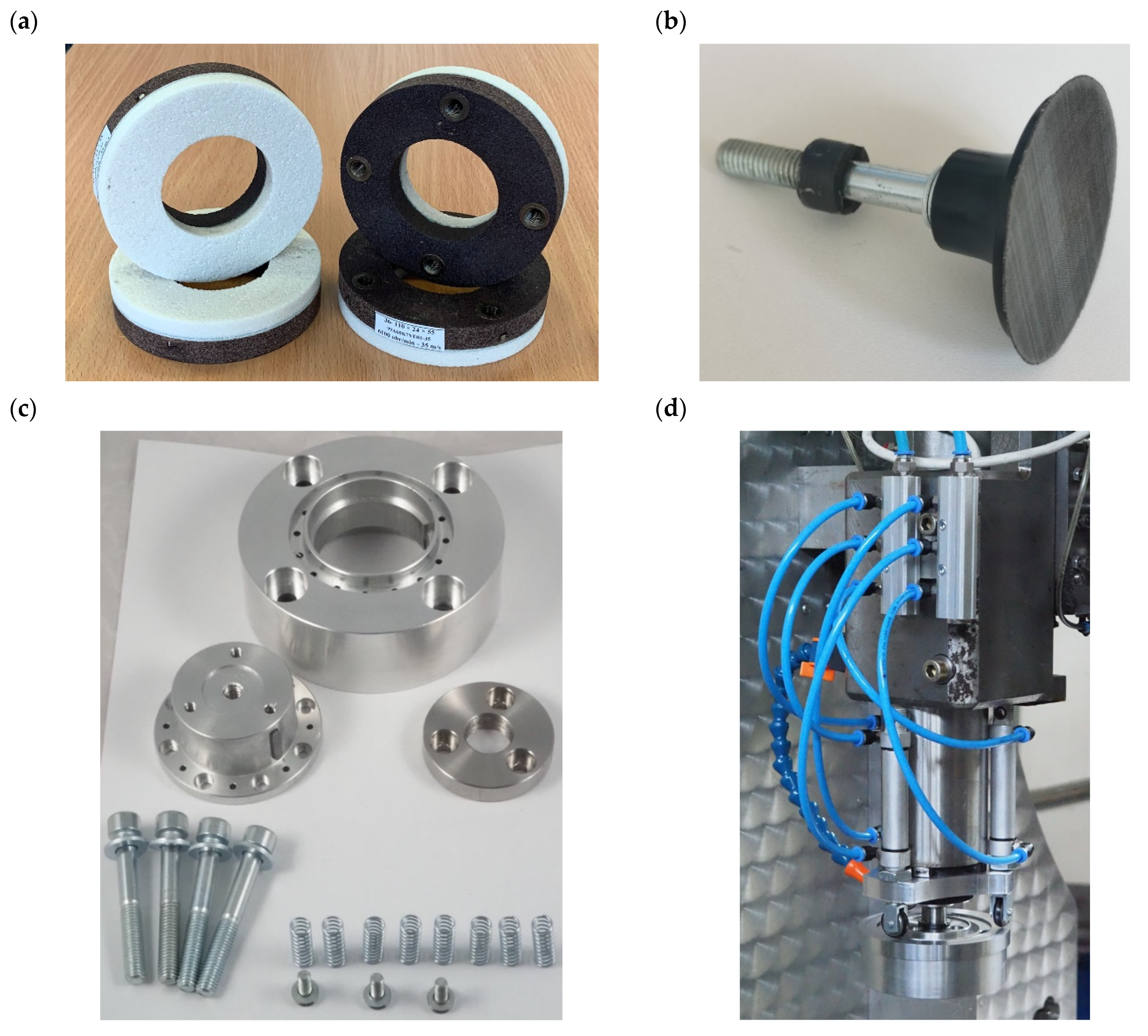
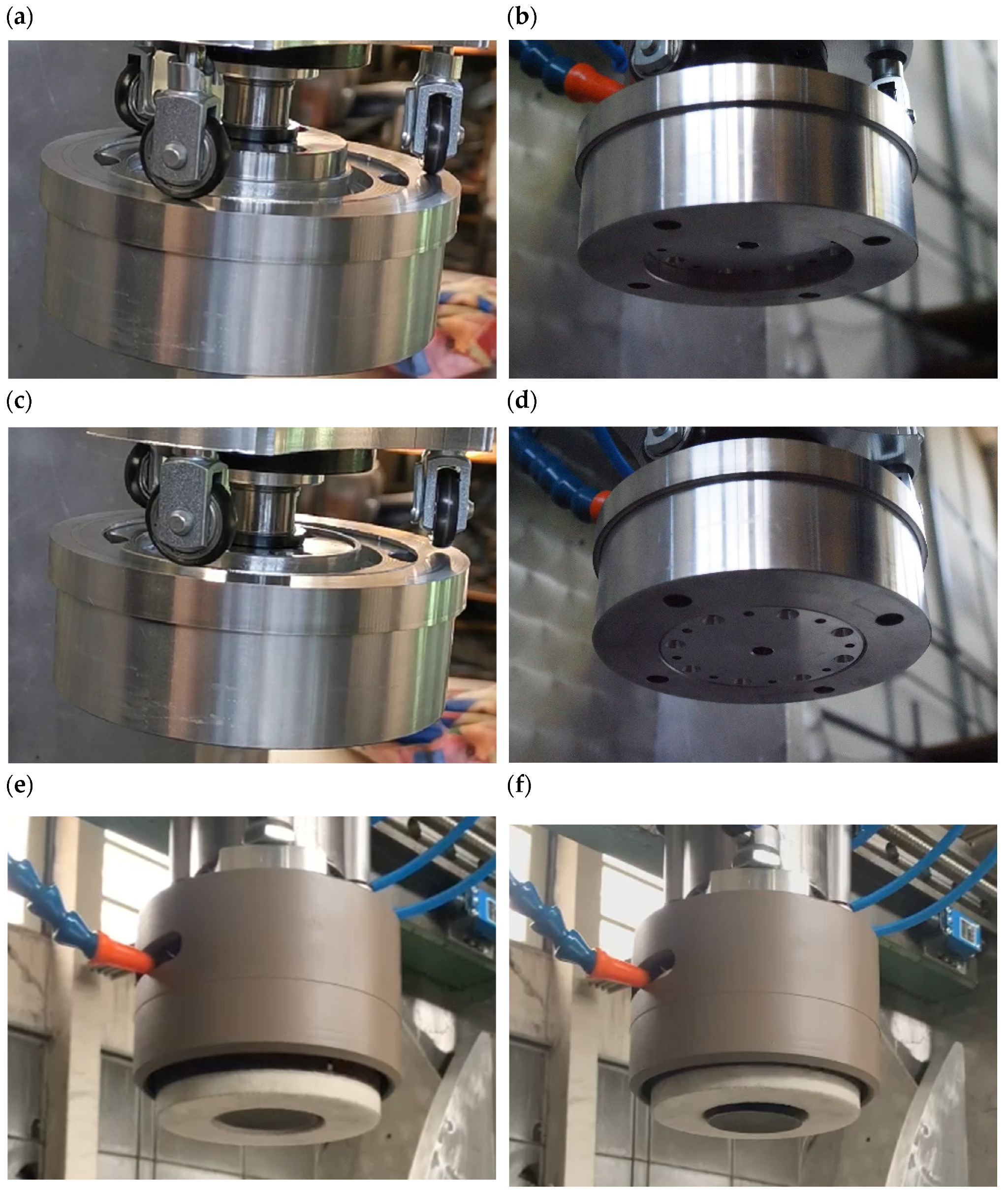
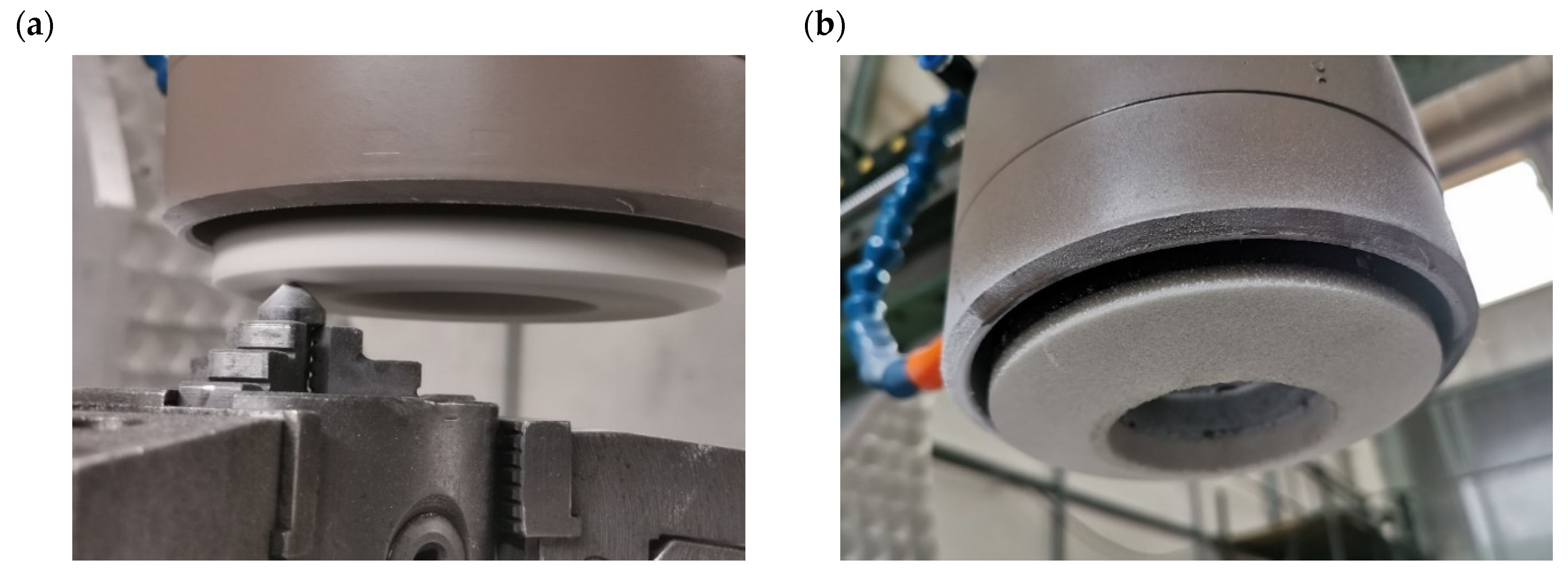

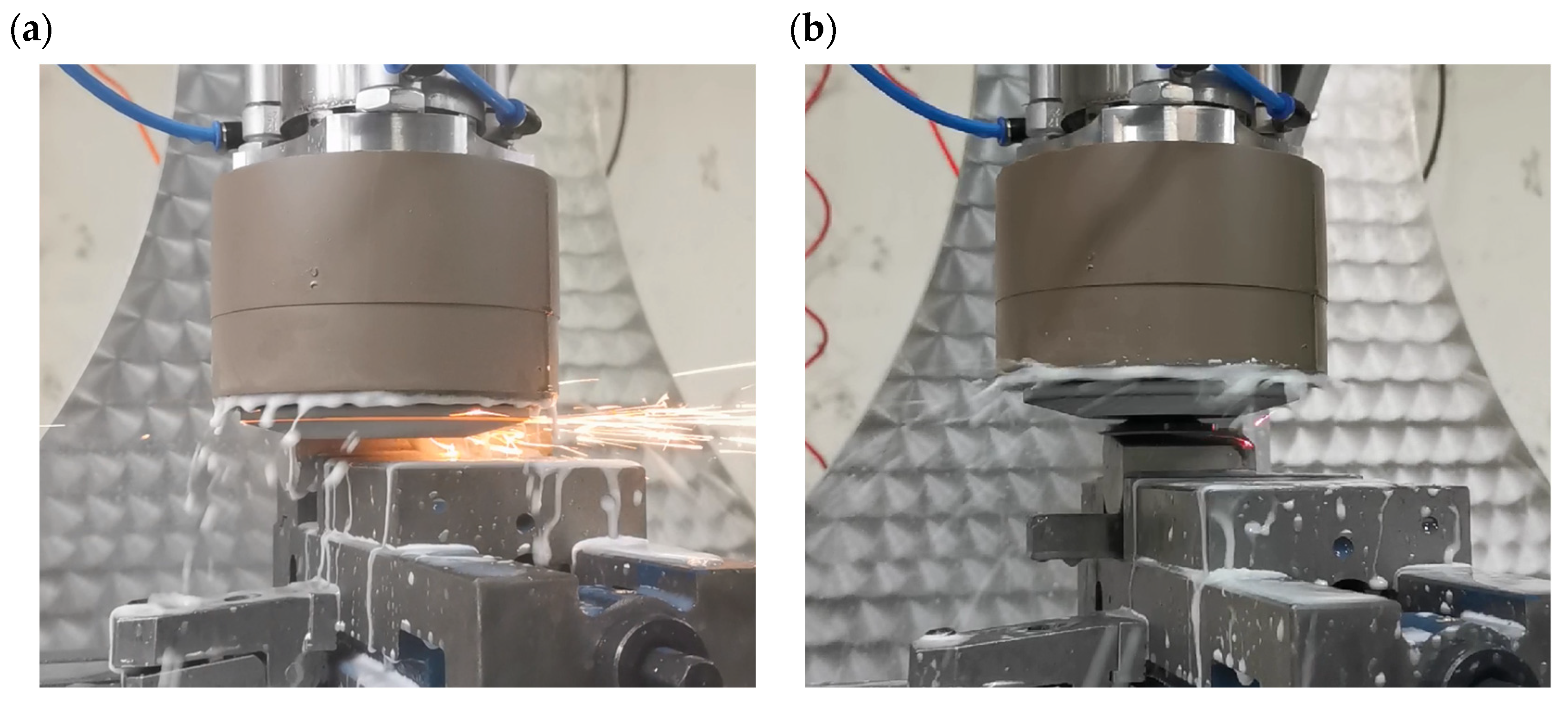
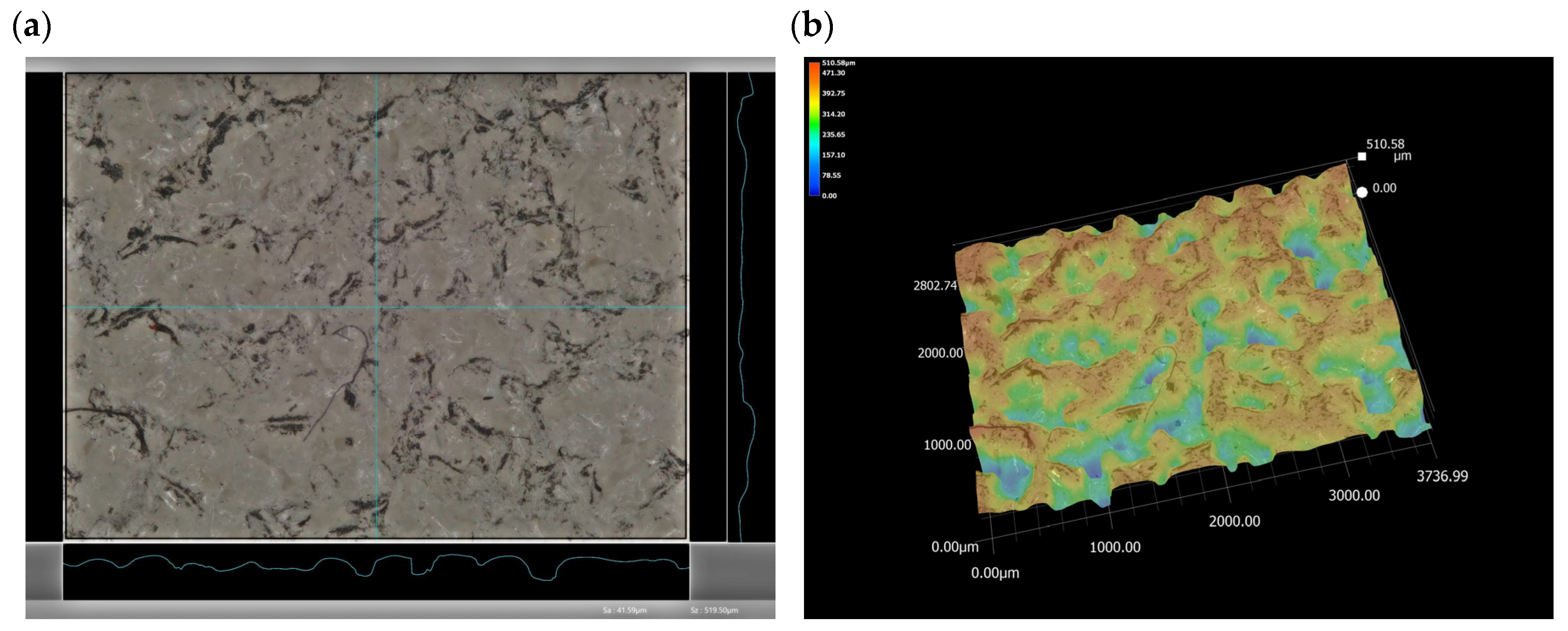
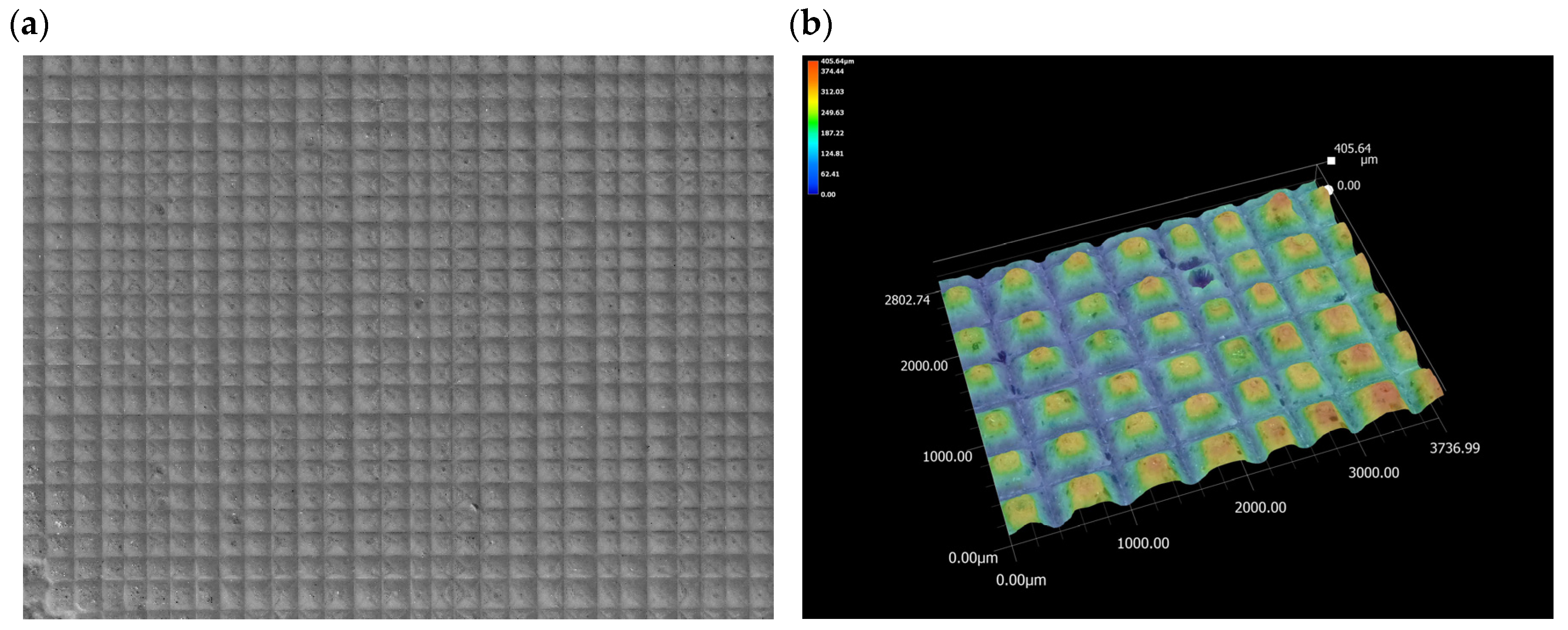
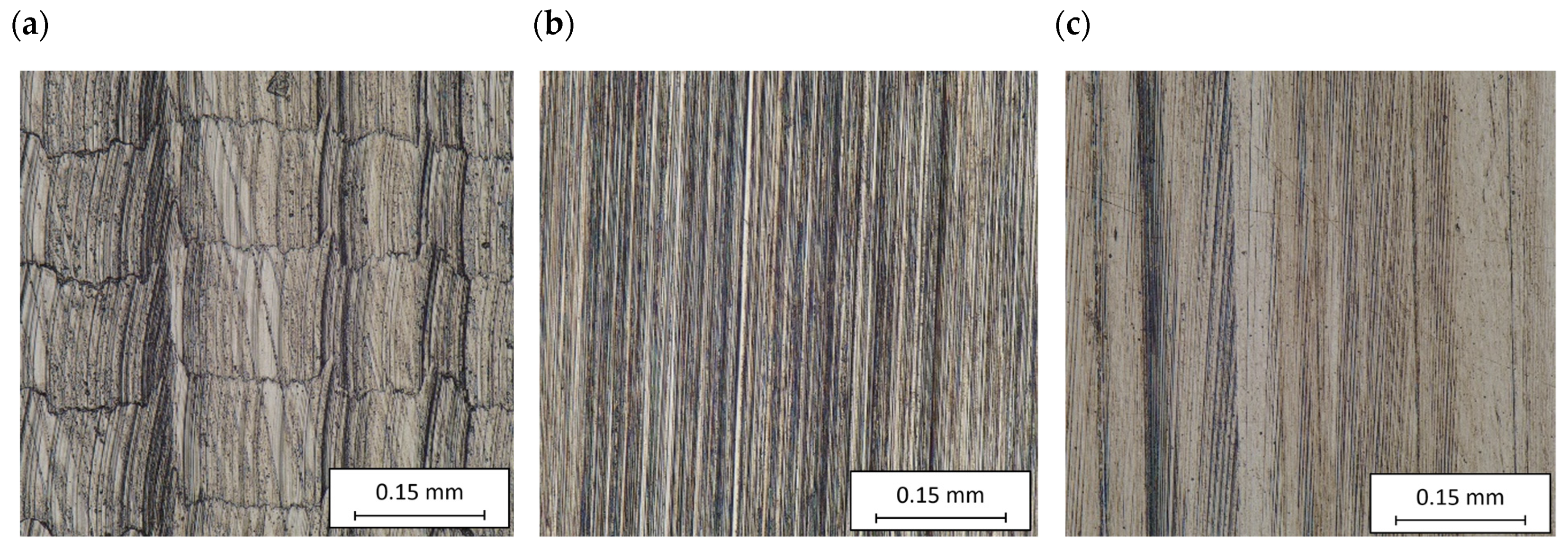

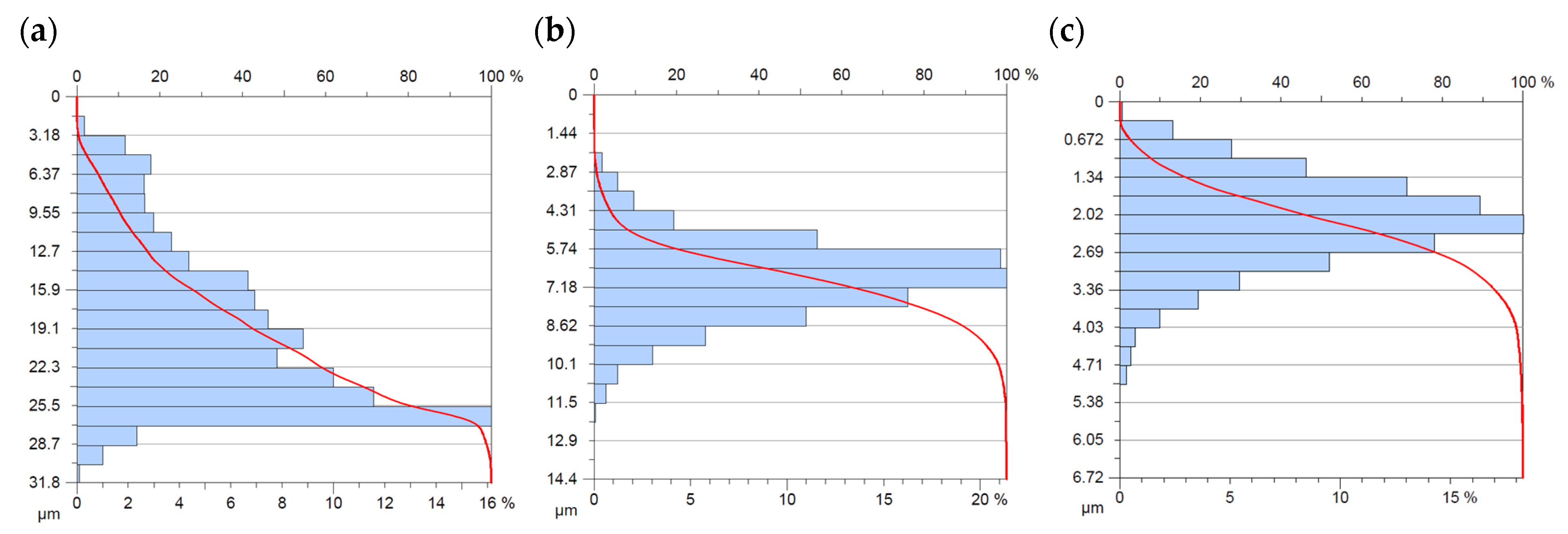

| Ceramic Grinding Wheel | ||||||
|---|---|---|---|---|---|---|
| Type | Size [mm] | Abrasive Type | Abrasive Grain Size | Grade | Structure | Bond Type |
| 3611 | 110 × 24 × 55 | 99 A | 60 | K | 9 | V |
| Friable Aluminum | Medium | Soft | Open | Vitrified | ||
| Prone grinding wheel | ||||||
| Type | Size [mm] | Grade | Material | Mounting | ||
| Trizact | 50 | A45 P400 | 237 AA | Roloc | ||
Disclaimer/Publisher’s Note: The statements, opinions and data contained in all publications are solely those of the individual author(s) and contributor(s) and not of MDPI and/or the editor(s). MDPI and/or the editor(s) disclaim responsibility for any injury to people or property resulting from any ideas, methods, instructions or products referred to in the content. |
© 2023 by the authors. Licensee MDPI, Basel, Switzerland. This article is an open access article distributed under the terms and conditions of the Creative Commons Attribution (CC BY) license (https://creativecommons.org/licenses/by/4.0/).
Share and Cite
Jaskólski, P.; Chaciński, T.; Zawadka, W.; Nadolny, K. Feasibility Study of Integrated Precision Abrasive Machining of Shaped Surfaces. Appl. Sci. 2023, 13, 4508. https://doi.org/10.3390/app13074508
Jaskólski P, Chaciński T, Zawadka W, Nadolny K. Feasibility Study of Integrated Precision Abrasive Machining of Shaped Surfaces. Applied Sciences. 2023; 13(7):4508. https://doi.org/10.3390/app13074508
Chicago/Turabian StyleJaskólski, Piotr, Tomasz Chaciński, Wojciech Zawadka, and Krzysztof Nadolny. 2023. "Feasibility Study of Integrated Precision Abrasive Machining of Shaped Surfaces" Applied Sciences 13, no. 7: 4508. https://doi.org/10.3390/app13074508





